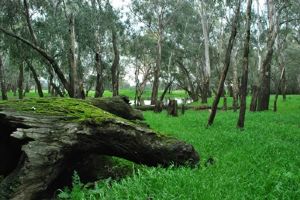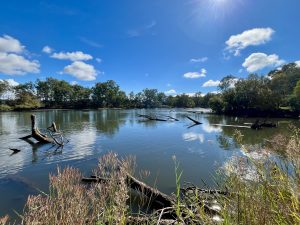Recently we were struck by an article in the Australian Scout magazine by Janet Granger-Wilcox, a Venturer leader with Upper Beaconsfield Scouts.
Considering the links between spirituality, the Scouting movement and the outdoors, Janet became interested in indigenous people’s close relationship to the land – often described as “connection to country”. Her research lead to the Blackfulla Revolution Facebook page and from there she compiled an article on how we who love the Australian outdoors can respectfully make our own connection to country.
The following is reproduced from her article, with thanks to Janet and the Blackfulla Revolution Facebook page at https://www.facebook.com/ourcountryourchoice
1. Learn some of the traditional dialect of your area. Many libraries and bookstores hold local dialect dictionaries. Language is key because it reveals so much about the culture and land that it comes from. Place names are a great place to start. Find out which in your local area are of First Nation People (FNP) origin and their meanings- each will reveal something about that place that will enhance your understanding of the local culture and environment.
2. Read, listen, watch. Check out Aboriginal films, documentaries and books- particularly those produced, written or heavily contributed to by FNP. They reveal so much about the values, characteristics, issues and spiritual outlook of FNP. ‘Putuparri and the Rainmakers’ is an excellent recent example. While this film may not relate to your community, it can’t fail to enhance your understanding of Aboriginal people’s spiritual connection to country.
3. Read, watch, listen to the Dreaming stories of your area – online searches, I-tunes and app searches, libraries and bookstores often have various local options. They will teach you about the animals of that region and how they came to be and what they represent. They will also help you to understand the values, attitudes and social order of Aboriginal society.
4. Find out which significant sites are in your area – known camping grounds; birthing place; ancestral landforms; scar trees; caves and rock art etc and visit them. Learn as much as you can about the history and importance of the site before going and when you get there allow yourself time and privacy to engage with it and go back in time and feel what was there before.
5. Tread lightly and respectfully take nothing but memories and leave nothing but your footprints. Try to imagine the landscape 200 years ago and connect with that.
6. Enter an unfamiliar area as though entering a person’s house for the first time. Enter with respect and caution. Take in your surroundings slowly and in detail and get a sense of the vibe and feeling of the area.
7. When you are near water – particularly before swimming – rub some sand between your palms and release it into the water and/or wipe your hand under your armpit and wash the perspiration off into the water and introduce yourself. Say your name and where you come from, acknowledge the traditional custodians and ask for their blessing to be on their land.
8. Talk to the animals. Warble at the magpies, laugh at the kookaburras – they will come closer for a chat and you can admire their personalities and beauty.
9. Look around at the tall native trees for signs of foot hole marks, scarring, native bees, possum scratches, grub holes, resins/sap etc
10. Learn the plant medicine and food staples of the area, their local names and identify them when you can – prepare and try them.
11. Try your hand at crafting tools from natural resources – spear or tap sticks – there are many great YouTube videos that show you how it will give you a greater knowledge and appreciation of your environment and its many uses.
12. Try and find out which local customs and rules apply and observe them. For example – no whistling at night time, no saying the name of a deceased person for a designated period or traditional men’s/women’s areas.
13. Learn what the more common symbols used in art represent. Many are consistent across the country ie water, camp site, person, while others such as animal tracks and bush tucker vary by region. This will allow you to interpret more FN art with a deeper insight and ability to interpret meaning from symbols.
14. Learn and mark the traditional seasons on your calendar, learn to say the names of each and what native foods are/were common that time of year.
15. Do a quick acknowledgment of country at events/gatherings and when entering the area of another nation/tribe. Simply acknowledge the traditional people of that area and the fact that you are respectfully visiting their traditional land (eg, we acknowledge that we are now on — country and pay our respects to the custodians, ancestors and spirits of this land). There is now even a Welcome to Country app available for iphones that will help you to do this!






